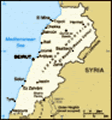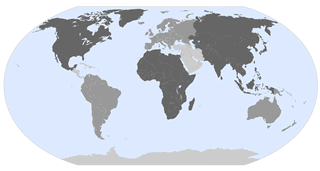Advertisement
Published: September 3rd 2011
Lebanon, one of the smallest Middle Eastern countries – smaller than the state of Connecticut – is one of those crazy creations that emerged out of the dismemberment of the Ottoman Empire post-WWI, a result of the wranglings of the British and French over the territory between Anatolia in the north and the Arabian Peninsula to the south. One look at a map will show just what an odd jigsaw puzzle this region is. That weird wedge wedged into Jordan? That is often termed “Winston’s Hiccup” due to the most likely apocryphal story that the map was drawn on a dinner napkin by Winston Churchill – who then felt his dinner a bit too well. Lebanon, at least from a geographical perspective, also seems an odd gouge out of the coast, a bite into Syria. Why was this tiny place separated from its larger neighbors? What distinguished it from the rest of the French and British mandates? To better understand the geo-politics, one needs to go back to the mid/late 19th century, when the whole area was firmly a part of the Ottoman Empire but becoming of increasing interest to the imperial powers of Europe.
But first things first.
***
I initially tried to go to Beirut when I was studying in Cairo, back in the mid 90s. At that time it was technically illegal for Americans to travel to Lebanon, as the long civil war (1975-1990) had only ended a few years earlier. The “Paris of the Mediterranean” might not have been burning, but it was still smoldering. The fact that it was off limits just made me want to go all the more. But in the end I let “common sense” prevail and didn’t attempt it. I wouldn’t, as a poor undergrad, have been able to afford the $10,000 or so fine had I been caught. But the desire to cross into Lebanon never went away.
Oddly, perhaps, considering all my years of studying and traveling in the Middle East – including all of Lebanon’s closest neighbors: Jordan, Israel, and Syria – it has taken me until now to make it to Beirut. This major gap in my regional explorations finally has been filled, made possible by my present proximity to the country (an easy three hour direct flight from Khartoum).
***
It doesn’t take long to see that Beirut is a unique
place. Even as I left the airport to head to my hotel downtown, I could see that the city is a patchwork of war-ravaged buildings – some still bullet hole-ridden shells! – and ultra modern new construction. Mercedes jostle with army vehicles (even the occasional tank) in the narrow roads. While some areas have been rebuilt, like the old downtown, it seems like the Beirutis are fine with leaving reminders of the civil war in the midst of even their poshest neighborhoods. It’s as though they have shrugged their collective shoulders and said: “Eh, why be concerned with the past? Let’s enjoy the present!”
Actually, what struck me most about Beirut was just how positive a place it is. For being in a country with such a troubled past – and troubled present (see the next blog entry!) – Beirut pulses with life. The city is bursting with restaurants, cafes, and shops; the streets, even during Ramadan, were packed with people. Families stroll along the corniche in the evening (often late into the evening!) enjoying the breezes off the sea, drinking the strong, strong coffee offered by vendors dotting the way. Sometimes they stop to smoke a shisha while
gazing out to the Mediterranean.
Besides just soaking in the atmosphere, Vincent and I played the tourists, visiting the beautiful American University of Beirut and the National Museum, among others. Stepping into the leafy quiet of AUB’s campus, perched on a hill overlooking the expanse of the sea, one can almost forget that you are at a university in the Middle East; it feels more like a college somewhere in New England. One might also forget that this famous institution, one of the most important universities in the region and one that played a major role in the history of the Arab world (this being the intellectual birthplace of Arab nationalism), did not escape the ugliness of the Lebanese war. Dr. Malcolm Kerr, the ninth-president of the university, was assassinated in 1984 right in front of his office. Other faculty and staff were kidnapped and murdered. Now, all that seems a lifetime ago.
The current state of the National Museum also belies its wartime experience. When you walk into the central hall, a bright, airy space, you find neatly presented artifacts from the Levant’s astoundingly long history, each labeled in Arabic, English, and French (most Beirutis seem to
be at least tri-lingual, easily able to converse in all three of these languages). It’s a world-class institution that details the archaeological finds from the Neolithic era, through each of the many states and empires that ended up ruling what is now Lebanon and Syria – the Phoenicians, the Egyptians, the Achaemenid Persians, the Hellenistic Seleucids, the Romans, the Byzantines, the Arabs, European Crusaders, the Mamluks, the Ottomans… But when you watch the museum’s film on how the artifacts were saved during the civil war, you realize just what a miracle it is that the museum exists at all. The famous sarcophagi from Byblos were encased in concrete; smaller objects – pots, jewelry, miniature statues, etc. – were hidden in the basement. The building itself suffered extensive damage, its front columns pitted from repeated gunfire and the interior left exposed to the elements. However, the museum has been lovingly restored; you’d never know it had weathered a storm of war.
The end of my trip happened to coincide with Eid al-Fitr, the festival at the end of Ramadan. Hamra Street, one of the main shopping and eating districts in central Beirut, was cordoned off for a street fair, complete
with craft and food stands. Vincent and I wandered through the festivities, stopping to join the crowd gathering at a stage set up at the end of the street. A Lebanese singer named Aziza took the stage and the audience joyfully began to clap, dance, and sing. Even when a power cut plunged the neighborhood into darkness, Aziza powered on and her fans continued to revel in the music.
Somehow, that experience sums up the appeal of Beirut…
Life must go on.
***
Back to my favorite subject: Ottoman history. So how did Lebanon come to be?
The area that is now the independent state of Lebanon was under Ottoman rule from the early sixteenth-century until 1918. Basically, four hundred years. It was an unusual corner of the empire right from the start, due to its unique demographics. Mount Lebanon, the mountain range that stretches about 160 km along the Mediterranean coast, harbored populations of fiercely independent Maronite Christians and Druze, among others. The Ottoman sultans often ruled through local feudal families (including the Maans, who were Druze, and the Shihabs, who were Sunni Muslim), figuring they were best suited to deal with the fractious community.
But, in general, Lebanon was not a distinct territory from what came to be known as “Greater Syria”, an area that would include present-day Syria, Lebanon, Jordan, and Israel/Palestine.
During the nineteenth-century, a new player came onto the scene in the eastern Mediterranean: France. This European power would begin to intercede in the affairs of the Christian communities in the area, especially aiding the Maronites. The first major intervention was getting the Ottoman sultan to divide Mount Lebanon into two districts, one Druze, one Christian, in 1842 after bitter clashes occurred between the two communities. Not surprisingly, this division simply fueled animosities between the Druze (supported by the British, by the way) and the Christians. As conflict grew increasingly common over the next two decades, a new system – again proposed by France and other European states – was put into place in 1861: the mutasarrifiyya. This was a semi-autonomous territory to be administrated by a non-“Lebanese” (i.e. not of the area) Christian governor on the behalf of the Ottomans. In many ways this was the precursor to modern Lebanon. The formation of a distinct political unit based around Mount Lebanon.
When the Ottomans found themselves on the
losing side of WWI, they lost their holdings in the Arab world. France and Britain carved up the region, almost at whimsy. A multitude of states that had no historical precedent, even as Ottoman provinces, came into existence. Lebanon, oddly, was one of the few that corresponded in some fashion to an earlier unit (albeit a quite recent one).
France insisted on Lebanon’s independence from Syria (also a French mandate) in order that there be one state in the region with a Christian majority. However, as was always the case, there was still a crazy patchwork of religious communities in this tiny, mountainous region. And when France managed to expand the political boundaries of Lebanon, at the expense of the Syrian mandate, they inadvertently “diluted” the Christian majority by bringing more Muslims under Lebanon’s political umbrella.
When Lebanon gained independence from France in 1943, an unfortunate decision was made to organize the government along communal lines in attempt to be “fair” to each of the religious communities. Parliament was divided by a 6:5 Christian to Muslim ratio, and each of the major political offices were designated for a particular group: the President had to be a Maronite Christian;
the Speaker of Parliament, a Shi’a Muslim; and the Prime Minister, a Sunni Muslim. Others – the Greek Orthodox, the Druze, etc. – had little place in the system. Is it any wonder that resentments grew? That a bloody civil war erupted in 1975?
Although the war ended in 1990, Lebanon has a long way to go before it achieves real stability.
*The title of this entry comes from a piece of political art that I saw on a postcard. It’s a cartoon rendering of Beirut, showing, with dark humor, the chaos of conflict raging through the city’s streets…
Advertisement
Tot: 0.113s; Tpl: 0.021s; cc: 6; qc: 31; dbt: 0.0714s; 1; m:domysql w:travelblog (10.17.0.13); sld: 1;
; mem: 1.1mb






















